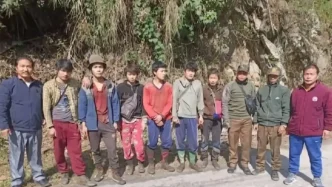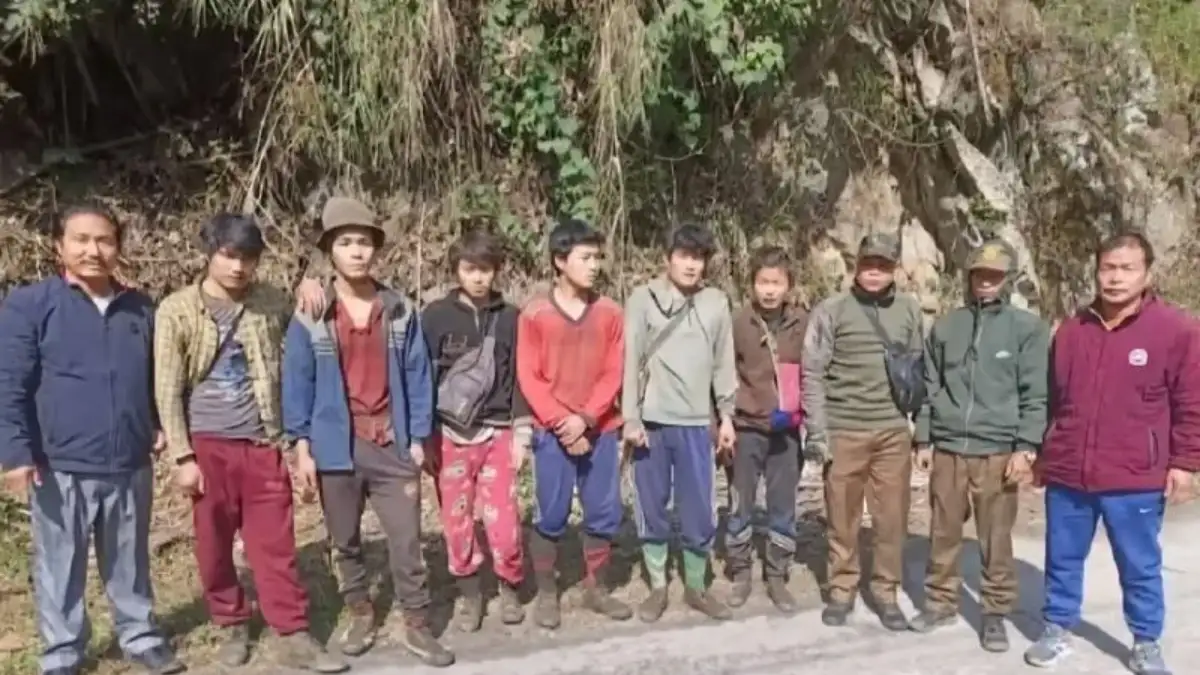In a startling breach of security, six Myanmar nationals escaped from police custody at Khupa Police Station in Arunachal Pradesh’s remote Anjaw district on June 12, 2024. The incident, which occurred in the Hayuliang subdivision near the sensitive India-China border, has sparked significant concern among local residents and civil society groups over the state of border security and law enforcement oversight in one of India’s northeastern frontier regions.
Details of the Escape
The six individuals had been held in judicial custody since February 27, 2024, after their apprehension near Yatong village in the Walong Circle. They were detained on suspicion of illegal entry into Indian territory, a charge that underscores the ongoing challenges of managing porous borders in the region. Authorities have confirmed the escape but have yet to provide detailed information on how the incident unfolded or what lapses may have contributed to the breach.
News of the escape only emerged recently, despite occurring over a month ago, prompting criticism over the delayed disclosure. Local communities have expressed frustration at the lack of transparency, with some questioning whether adequate measures were in place to secure the detainees at a police station located in such a geopolitically sensitive area.
Search Operation Underway
Following the escape, authorities have initiated a comprehensive search operation to locate the individuals. However, the rugged terrain and proximity to the India-China border complicate efforts. It remains unclear whether the escapees are still within Indian territory or if they have managed to cross into neighboring regions. The absence of an official update on the search’s progress has fueled speculation and heightened anxiety among residents already wary of cross-border tensions.
The border near Anjaw district is a known hotspot for illegal crossings, with historical instances of smuggling and unauthorized migration. The escape of these individuals raises questions about the effectiveness of current border surveillance mechanisms and whether additional resources are needed to bolster security in such remote areas.
Broader Implications for Border Security
The incident in Anjaw district is not an isolated event but part of a larger pattern of security challenges along India’s northeastern borders. Arunachal Pradesh, which shares a 1,129-kilometer boundary with China and a significant frontier with Myanmar, has long been a focal point for geopolitical tensions and cross-border movement. The India-China border, in particular, remains a contentious area following the 1962 Sino-Indian War and more recent military standoffs in regions like Doklam and Ladakh.
Analysts suggest that the escape could point to systemic issues within local law enforcement, including inadequate training, understaffing, or insufficient infrastructure at rural police stations like Khupa. “This incident highlights the need for enhanced capacity building in border areas” said a regional security expert based in New Delhi, speaking on condition of anonymity due to the sensitivity of the issue. “Remote stations often lack the resources to handle complex cases involving foreign nationals, especially in areas with ongoing territorial disputes.”
Moreover, the escape raises concerns about potential vulnerabilities that could be exploited by larger networks involved in human trafficking or illicit trade. While there is no evidence to suggest that the six individuals were part of such networks, their ability to evade custody in a high-security zone underscores the urgent need for improved monitoring and coordination between local police and central border forces like the Indo-Tibetan Border Police (ITBP).
Community and Political Reactions
Local residents in Anjaw and surrounding areas have voiced alarm over the incident, with many calling for accountability from authorities. Civil society organizations in Arunachal Pradesh have urged the state government to conduct a thorough investigation into the escape, focusing on both the immediate circumstances and broader security protocols. “We need answers about how this happened and what is being done to prevent future breaches” said a spokesperson for a local advocacy group in Hayuliang, who requested anonymity to avoid potential repercussions.
Political leaders in the region have also weighed in, with some using the incident to highlight perceived neglect of northeastern states by the central government. Opposition figures in Arunachal Pradesh have criticized the delayed public disclosure, arguing that it undermines trust in local governance. “The people of Anjaw deserve to know the full truth without weeks of silence” said a regional politician during a recent public address, as reported by local media outlets.
At the national level, the incident may reignite debates over India’s border management policies, particularly in the context of ongoing discussions about strengthening infrastructure along the Line of Actual Control (LAC) with China. The central government has yet to issue an official statement on the escape, but sources within the Ministry of Home Affairs indicate that the matter is being closely monitored.
Regional Context: Myanmar’s Instability
The escape of Myanmar nationals also draws attention to the broader regional instability affecting India’s eastern borders. Since the military coup in Myanmar on February 1, 2021, the country has been gripped by widespread violence and political turmoil, displacing thousands of civilians. Many have sought refuge in neighboring countries, including India, often crossing borders illegally due to desperation or lack of formal channels for asylum.
Arunachal Pradesh, along with other northeastern states like Manipur and Mizoram, has seen an influx of Myanmar nationals fleeing conflict, particularly from regions like Chin and Sagaing that border India. While India is not a signatory to the 1951 UN Refugee Convention, it has historically provided shelter to displaced groups on humanitarian grounds. However, the central government has also emphasized the need to regulate such inflows to prevent security risks, a policy that has sparked debate among human rights advocates.
The six escapees in Anjaw were detained under laws governing illegal entry, but their current status—whether they are refugees, migrants, or otherwise—remains unclear in public reports. If confirmed to be fleeing conflict, their escape could prompt renewed discussions on how India balances humanitarian obligations with national security imperatives in border regions.
Looking Ahead: Security and Policy Challenges
As the search for the escaped Myanmar nationals continues, the incident serves as a stark reminder of the multifaceted challenges facing India’s northeastern frontier. Strengthening border security without alienating local communities or exacerbating tensions with neighboring countries will require a delicate balance of policy and resources. For now, the focus remains on recapturing the individuals and ensuring that such breaches do not recur.
Yet, beyond the immediate response, the escape underscores deeper questions about preparedness in remote border districts. Will this incident prompt a reevaluation of security protocols at rural police stations? Could it lead to greater investment in surveillance technology or personnel training in areas like Anjaw? As authorities grapple with these issues, the people of Arunachal Pradesh await not just answers, but action to safeguard their region in an increasingly complex geopolitical landscape.















